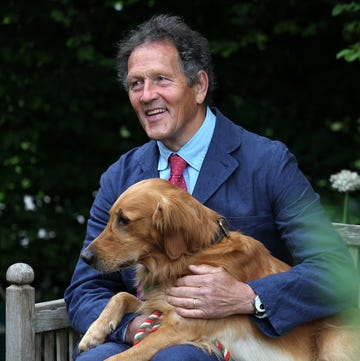1Easter baskets have special symbolism.
 EllenMoran//Getty Images
EllenMoran//Getty ImagesThe woven treat containers represent birds' nests and new life, especially when filled to the brim with eggs. Plus, they're a pretty utilitarian way to gather those goodies on your Easter egg hunt.
2Easter lilies are a relatively new tradition.
 duckycards//Getty Images
duckycards//Getty ImagesThese beautiful blooms first originated in Japan and arrived in England in the late 18th century. The United States only caught onto the trend after World War I. The transition from dormant bulbs to delicate flowers brings to mind hope and rebirth, two important themes of the Easter celebration.
Advertisement - Continue Reading Below
3Easter eggs have medieval origins.
 Elles Rijsdijk / EyeEm//Getty Images
Elles Rijsdijk / EyeEm//Getty ImagesThink Easter egg hunts are a strange tradition? Listen to this medieval game children's game: A priest would give one of the choir boys a hard boiled egg, and the boys would pass it amongst themselves until the clock struck midnight, when whoever was holding it got to eat it. We hope they at least got some salt and pepper to go with it.
4Easter clothes used to be considered good luck.
 Ariel Skelley//Getty Images
Ariel Skelley//Getty ImagesOld superstition held that if you wore new clothes on Easter, you would have good luck for the rest of the year. In fact, it was so widely believed that upper-class New Yorkers would literally strut their stuff coming out of attending Easter mass at well-heeled midtown churches. This tradition become the basis of the modern, and decidedly less elitist, Easter Parade and Easter Bonnet Festival in New York.
Advertisement - Continue Reading Below
5Easter eggs date back before Easter.
 Westend61//Getty Images
Westend61//Getty Images 6The holiday was named after the Anglo-Saxon goddess Eostre.
 Claudia Rehm, Red Chopsticks Images//Getty Images
Claudia Rehm, Red Chopsticks Images//Getty ImagesScholars believe that Easter was named after a festival celebrating Eostre and the coming of spring. Her sacred symbols are thought to have been the hare and the egg, which is why they feature prominently in Easter symbolism too.
Advertisement - Continue Reading Below
7Eggs are dyed to represent the blood of Jesus Christ.
 Getty Images
Getty ImagesWell, at least that might be one of the reasons, which stems from early Christians in Mesopotamia. There isn't a concrete reason behind the tradition, but that's one of the theories. They also look pretty — and kids might be more likely to eat a dyed hard-boiled egg than a plain one!
8We can thank Germany for the bunny.
 Getty Images
Getty ImagesThe idea of the Easter bunny delivering candy and eggs originated in Germany during the Middle Ages, with the first written mention of this tradition dating back to the 16th century.
Advertisement - Continue Reading Below
9More than 1.5 Million Cadbury Creme Eggs are made every day.
 Getty Images
Getty ImagesEven more impressive is that the Bournville factory in Birmingham churns out 500 million of the cream-filled eggs every year. If you piled all those eggs on top of each other, they'd create a tower that's taller than Mt. Everest. Talk about an epic egg hunt.
10Around 90 million chocolate bunnies are sold for Easter in the US
 Moncherie//Getty Images
Moncherie//Getty Images Advertisement - Continue Reading Below
11A surprising 59% of people eat the ears first.
 maximkabb//Getty Images
maximkabb//Getty ImagesOnly a handful start with the feet or tail, and the rest apparently don't have a plan of action. If that's you, consider this your inspiration to give it a little thought before cracking into yours (or the kids').
12In the old days, pretzels were associated with Easter.
 Getty Images
Getty ImagesWhy? Because the twists of this salty treat resemble arms crossing in prayer. We say it's time to bring back this savoury snack to the sweets-filled holiday because life is all about balance.
Advertisement - Continue Reading Below
Advertisement - Continue Reading Below
Advertisement - Continue Reading Below
























